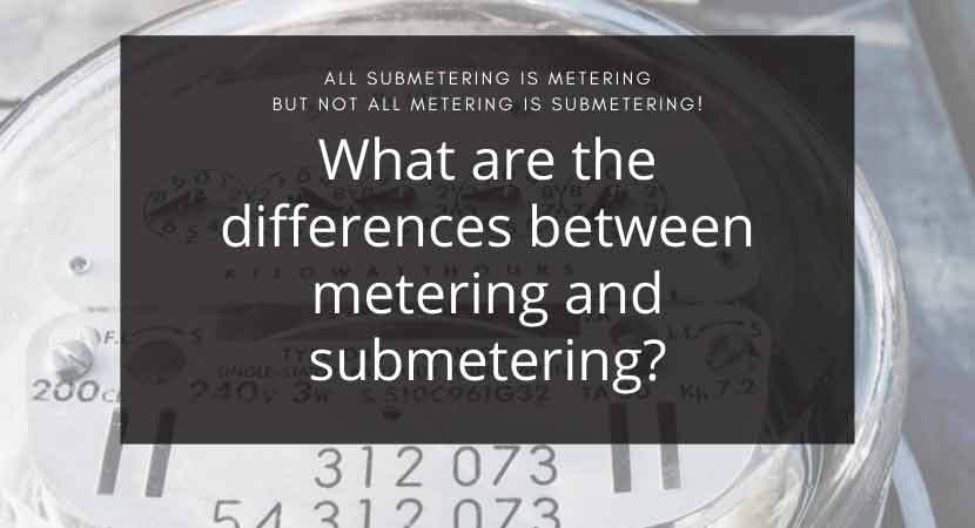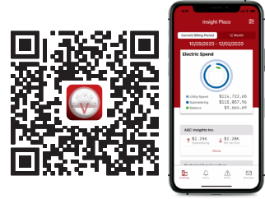What Are the Differences Between Metering and Submetering?

All submetering is metering, but not all metering is submetering
While metering is an effective way to understand your overall building or facility energy bills, you must know the differences between metering and submetering and why submeters are required to measure specific outcomes and energy efficiencies.
What is building metering?
Building meters measure the energy delivered from the utility into your building or facility.
Many buildings have multiple building meters. All of these are called metering or utility metering.
Building meters are typically below grade, such as in the basement areas of NYC buildings. The location can vary depending on your geographic region.
What is building submetering?
Building submetering is using a meter within your building or facility for specific energy measurements.
When a meter – BTU, electric, gas, steam, or water meter – is used "behind" the utility's meter to measure the amount of energy for a specific purpose or area within the building, that is submetering.
For example, in a chilled water plant, submetering uses BTU meters with electric meters to measure a specific chill water pump’s efficiency.
In commercial buildings and universities, submeters provide the most accurate measurements for billing and department allocations of energy. When you need to accurately allocate tenant or department energy usage, demand and costs, use revenue-grade submeters.
What is the difference between building metering and submetering?
The difference between meters and submeters is their purpose and placement.
- Building meters measure the total energy consumption for the entire building and are typically used by the utility provider for your utility bill.
- Submeters track energy consumption within specific areas, departments, or systems within the building, providing more detailed data to manage energy usage, allocate costs, or measure efficiency.
When you install submeters inside your building or facility, you break down energy usage into categories, enabling more effective energy management.
What types of submetering are there?
Several types of submetering are used depending on the needs of the building or facility:
- Tenant submetering: Measures energy usage specific to tenants, which is crucial for accurate billing and energy allocation.
- Plant submetering: Tracks energy usage within a plant or system, such as electricity, steam, or BTU usage in HVAC systems or chilled water plants.
- Departmental submetering: Common in universities, where energy use is tracked per department to assess energy consumption and identify opportunities for efficiency improvements.
When submetering may not be a cost-effective solution
Unlike most utility meters, where the meter cost is part of the utility services, submeters have their own upfront and ongoing costs. So, there are times when submetering is not cost-effective.
It is essential to look at the upfront and ongoing costs of submetering compared to the opportunities in what is being measured.
-
When submetering to measure energy efficiency, compare the energy savings to the submetering costs.
-
When submetering to allocate costs, the accuracy of submetering is critical.
-
When submetering to measure process efficiencies, target the most critical process steps, then add submetering as you learn more.
You can submeter all utilities, but you may not want to. Be sure to evaluate the value of submetering.
How to make sure your submetering is valuable
Determining the value of submetering starts with an assessment. At utiliVisor, we begin with a detailed assessment and analysis.
For submetering and billing clients, utiliVisor completes a utility allocation/billing analysis.
-
Gather all your leases to document your lease interpretations for review.
-
Analyze existing metering system's capabilities to tenant billing needs.
-
Review and audit client utility bill(s).
-
Make specific recommendations, based on utiliVisor's analysis, tailored to meet specific client needs. Where would submetering be most impactful?
For plant operation clients, utiliVisor completes an operational analysis.
-
Conduct a comprehensive review of your equipment's performance and system operating costs on a real-time basis.
-
Analysis of data by Operations Center to find anomalies and outliers which will yield energy savings.
-
Identify a cost-effective and efficient sequence of operations based on building load and outside air temperature
-
Operations Center meets with clients to review findings and offer suggestions specific to their needs and energy efficiency goals.
-
Develop energy analytics and performance alerts to sustain Energy Conservation Measures that have been implemented.
In the same way you assess and improve your home, you're continually reassessing and improving a building or facility.
To continually improve and ensure the value of submetering - assessments, ongoing monitoring, and tracking are critical.
Measuring effectiveness reveals the value of submetering.
FAQ: Metering vs. Submetering
Q: What is the main difference between metering and submetering?
A: The primary difference is that metering measures the total energy usage for a building, while submetering tracks energy usage within specific areas, departments, or systems inside the building for more accurate billing and energy management.
Q: When should I consider using submetering?
A: Submetering is ideal when you need to accurately track energy consumption for billing purposes, allocate costs to specific tenants or departments, or optimize energy usage for efficiency.
Q: Can submetering save me money?
A: Yes, by providing detailed energy usage data, submetering helps identify areas where energy consumption can be reduced, leading to potential savings. However, it's important to weigh the up-front costs of installation and maintenance against the savings.
Ready to discuss your metering or submetering needs?
Contact us hereAbout utiliVisor
Your tenant submetering and energy plant optimization services are an essential part of your operation. You deserve personalized energy insights from a team that knows buildings from the inside out, applies IoT technology and is energized by providing you with accurate data and energy optimization insights. When you need experience, expertise, and service, you need utiliVisor on your side, delivering consistent energy and cost-saving strategies to you. What more can our 45+ years of experience and historical data do for you? Call utiliVisor at 212-260-4800 or visit utilivisor.com

